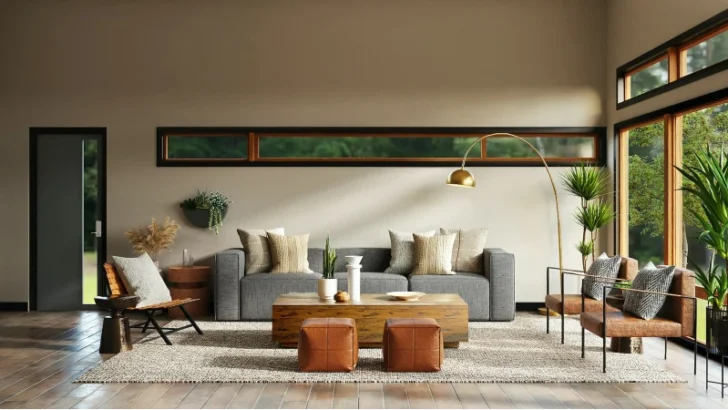Disclosure: This post may contain affiliate links, meaning we get a commission if you decide to make a purchase through our links, at no cost to you. Please read our disclosure for more info.
Interior design is an art form that requires skill, knowledge, and creativity to craft space into something aesthetically appealing. Whether you’re looking to create a cozy living room or an inviting office environment, getting your interior design basics right is essential for creating the perfect atmosphere.
Certain must-know fundamentals can help your interior design project operate smoothly, such as understanding design principles and color theory, as well as selecting purposeful furniture and decor. In this article, we will explore the essential elements of interior design so you can create a functional and beautiful space with ease.
To ensure success for your business, create a plan that outlines the process of how to start an interior design business. This will help you stay organized and on track throughout the project.
In This Post:
Color Theory
Color can make or break a design. A strong understanding of color theory is essential in creating a cohesive space. Colors can affect the mood of a room and evoke feelings of comfort, relaxation, or anxiety. Understanding the color wheel and color harmony will allow you to select complementary colors that will blend together naturally to create the right atmosphere. Choose colors that are in line with the overall aesthetic of the space. Additionally, keep up with color trends to ensure your design is modern and fresh.
Furniture Placement
The placement of the furniture in a room is another important aspect of interior design, as this can make a world of difference in the function and balance of a space. Understanding how to arrange furniture to account for traffic flow, focal points, and conversation areas will help you create a better flow in your designs.
Lighting
Lighting is also an essential element of interior design that can affect the ambiance and mood of a space. Different types of lighting can set the tone of a room, highlight a design feature, or create a sense of warmth. A combination of lighting types, such as overhead, task, and accent lighting, can create the perfect mood and atmosphere for clients.
Texture
Texture is another essential element of interior design because it adds depth and visual interest to a space. Combine different materials, such as wood, metal, and textiles, to create a multi-dimensional space. By mixing and layering textures, you can make a room feel more inviting and exciting to the senses. This can be achieved by adding a shaggy rug or wood accents, adding character to the space.
Space Planning
Space planning is the foundation of interior design. Understanding how to arrange space to maximize square footage and create user-friendly areas begins with knowing what balance and perception mean overall. By designing spaces that meet the needs of clients, they’ll be more satisfied with the end result.
Accessories
Accessories can be the final touch that pulls a room together. Selecting the right accessories can make all the difference in creating a polished and cohesive design. Think about adding items such as artwork, rugs, mirrors, plants, or lamps to complete a look and bring it all together.
Reasons to Understand the Basics of Interior Design
Understanding the basics of interior design is the foundation upon which every great design is built. Here are some reasons why it’s important to understand the essential elements of interior design:
Creates a Strong Foundation
The basic principles of interior design provide a solid foundation for creating beautiful and functional spaces. Knowing these fundamentals will not only allow you to create innovative and modern designs, but also establish a sense of consistency and quality throughout all of your projects.
Provides Effective Communication with Clients
An understanding of the basics of interior design enables you to communicate your creative vision effectively with clients. This helps in understanding the client’s needs and expectations to produce a design that meets their desire, promoting a positive relationship and client satisfaction.
Envisions Marketable and Competitive Designs
Good designs often result in a growing interior designing business. Knowledge of the basics allows you to create fresh, unique, and functional designs that can stand out in a crowded market. Therefore, having a complete understanding and expertise in these basics will help you to remain competitive and relevant in an increasingly competitive industry.
Builds a Positive Reputation in the Industry
Designers who have a complete understanding of the basics can provide clients with unique, desirable, and functional spaces that exhibit quality, style, and practicality. By delivering excellent design works, you can easily build long-lasting relationships with clients, as well as maintain a positive reputation in the industry.
Understanding the basics of interior design is crucial for creating beautiful and functional spaces. With a complete understanding of the basics of interior design, you can derive endless creative possibilities and create amazing spaces that reflect your client’s lifestyles.

